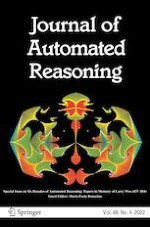11.08.2022
From Specification to Testing: Semantics Engineering for Lua 5.2
Erschienen in: Journal of Automated Reasoning | Ausgabe 4/2022
EinloggenAktivieren Sie unsere intelligente Suche, um passende Fachinhalte oder Patente zu finden.
Wählen Sie Textabschnitte aus um mit Künstlicher Intelligenz passenden Patente zu finden. powered by
Markieren Sie Textabschnitte, um KI-gestützt weitere passende Inhalte zu finden. powered by

 is created, to contain the corresponding value in the interval [1, 100].
is created, to contain the corresponding value in the interval [1, 100].